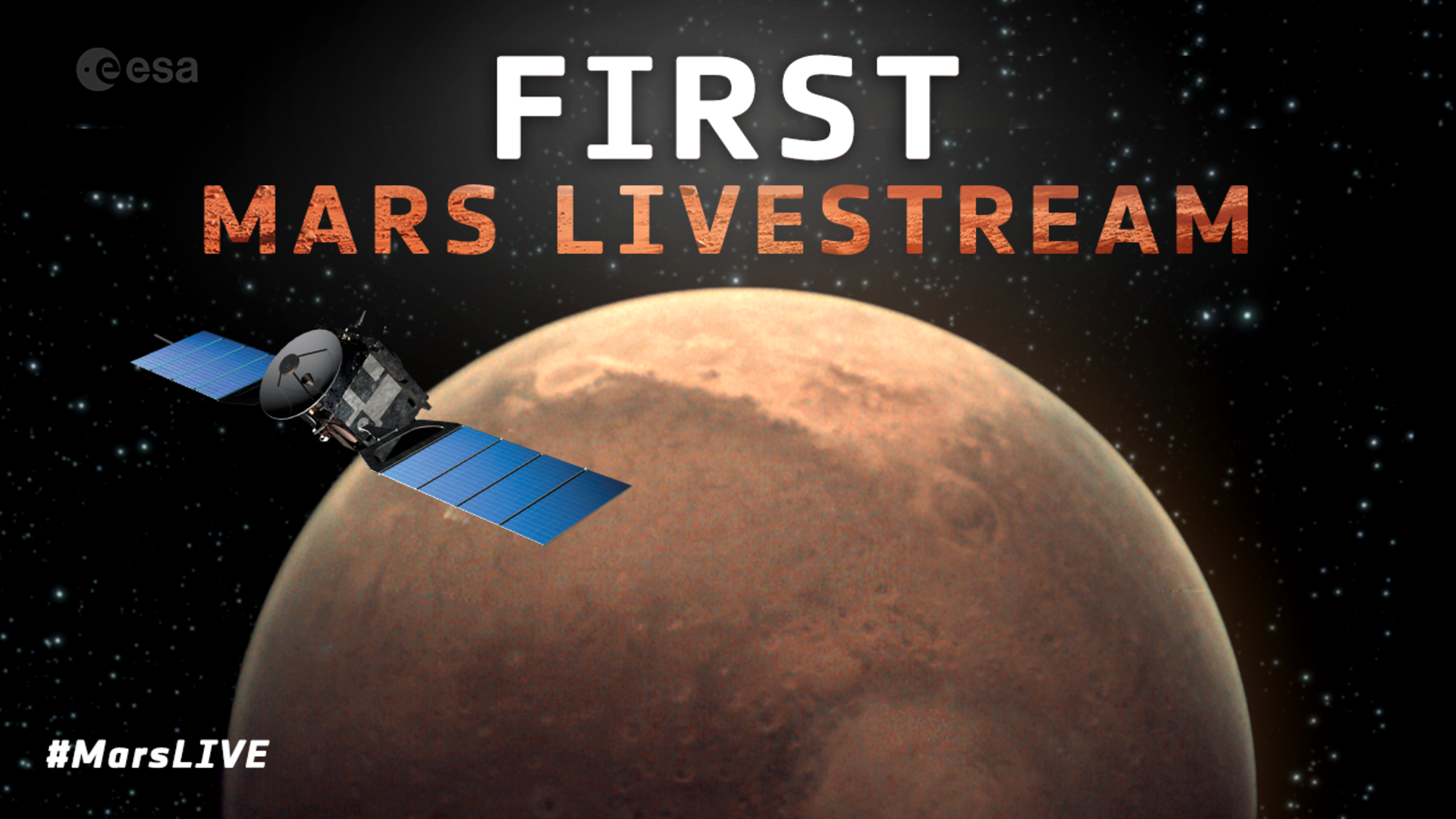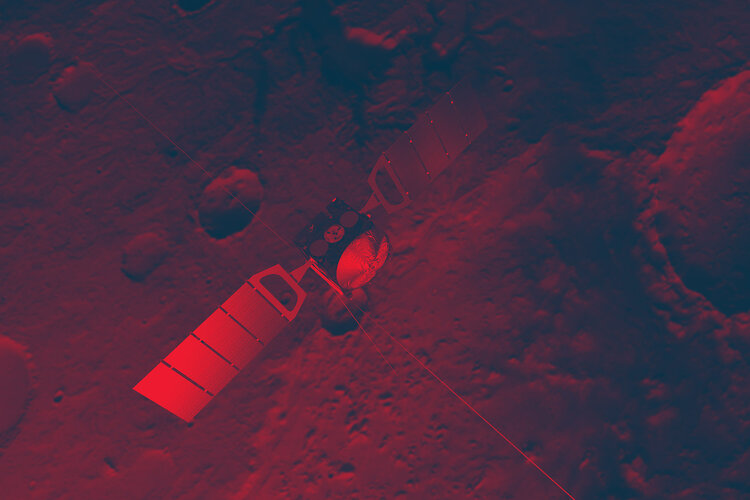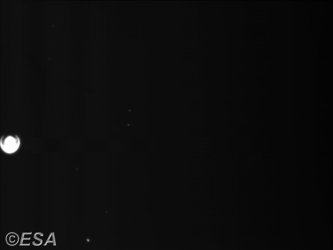Tune in for first Mars livestream
For one hour on Friday 2 June, join ESA on YouTube for a space first as live images stream down direct from Mars – this will be the closest you can get to a live view from the Red Planet.
Does Mars really exist? Yes, but we only have evidence of it as it was in the past, once light has bounced off it or is sent by orbiters and landers exploring it, and travels to Earth. Depending on the two planets’ relative positions in orbit around the Sun, this can take anywhere from 3 to 22 minutes.
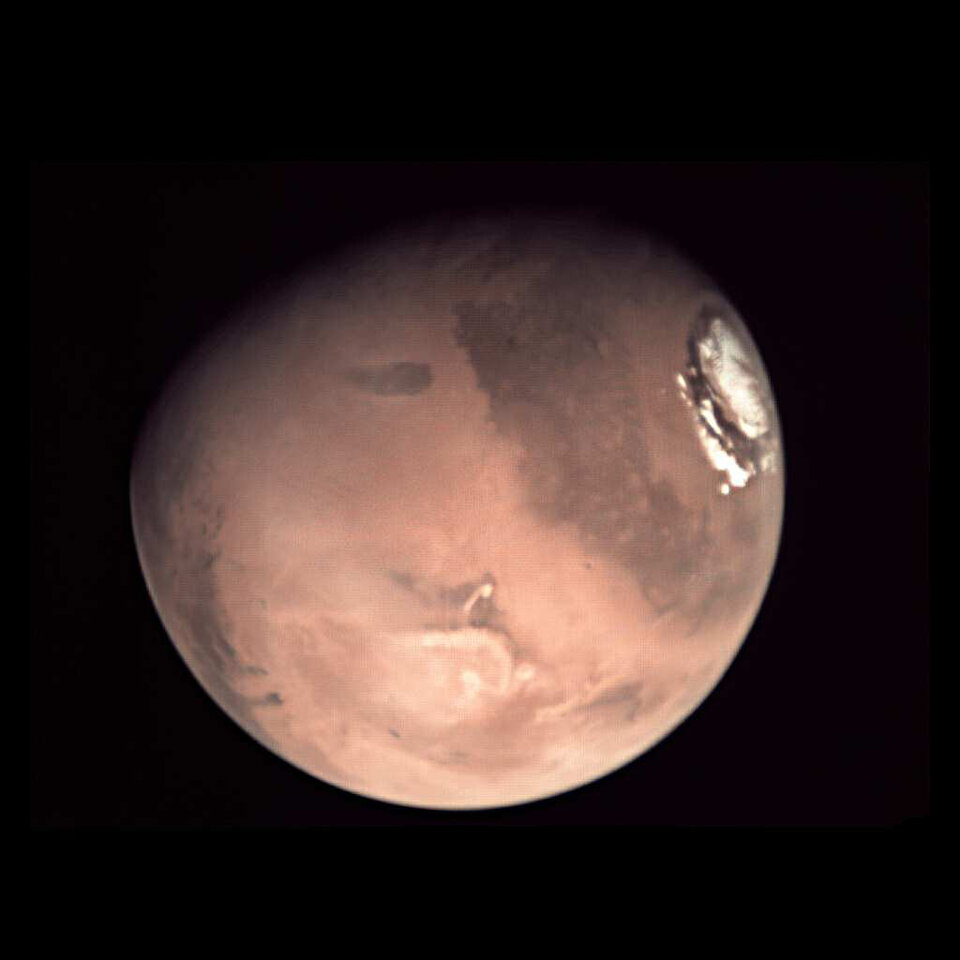
In this way, there’s actually no such thing as ‘live’ news in space as we are limited by the speed of light traversing great distances.
But, on Friday, to celebrate the 20th birthday of ESA’s Mars Express, you’ll have the chance to get as close as it’s currently possible get to Mars. Tune in to be amongst the first to see new pictures roughly every 50 seconds as they’re beamed down directly from the Visual Monitoring Camera (VMC) on board ESA’s long-lived but-still-highly-productive martian orbiter.
Get live updates via @esaoperations on Twitter and with the hashtag #MarsLIVE. Livestream starts 18:00 CEST.
Finally, live on Mars
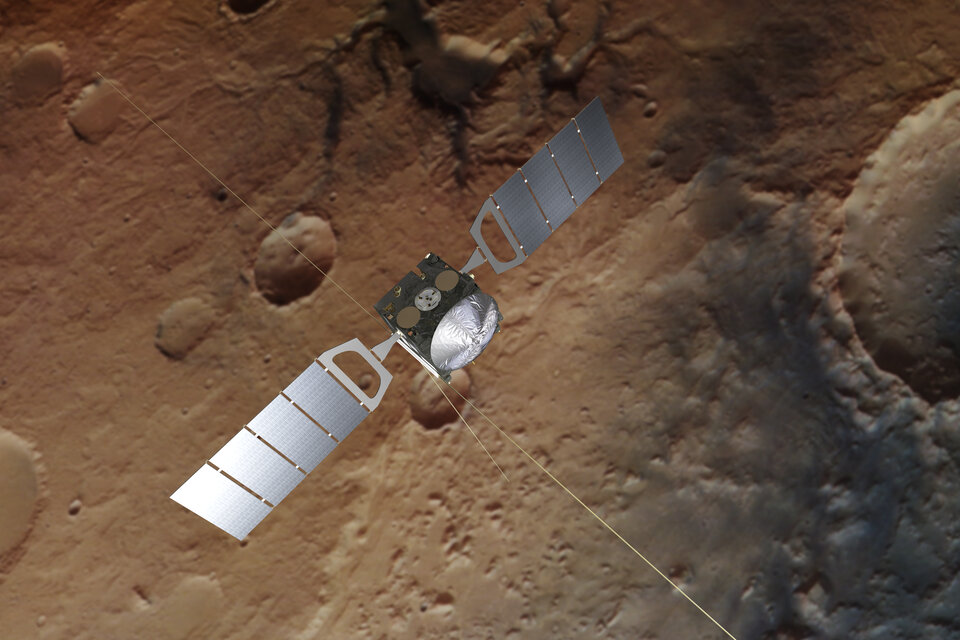
Most observations and data gathered by spacecraft are taken during periods when they are not in direct contact with a ground station antenna on Earth. Either because of geometry – for example, on the other side of the Sun or Mars – or the spacecraft’s antenna is pointing away from Earth while gathering science data.
For science, this is no problem. The data is stored on board and beamed down a few hours or even days later, once the spacecraft is in contact with the ground again. What normally happens for the Visual Monitoring Camera on Mars Express, is every couple of days a new batch are ‘downlinked’, processed and made available to the world.
![The speed of light. Frustrating? Sometimes. But it also allows for missions like Euclid, which will capture light that’s been travelling for 10 billion years, allowing us to see 10 billion years into the past.]](/var/esa/storage/images/esa_multimedia/images/2023/02/euclid_key_visual/24697545-1-eng-GB/Euclid_key_visual_article.png)
For most space missions, this works perfectly. Scientists then pore over the data that come in for years, discovering new secrets about the Universe. This makes ‘live’ footage rather rare.
In fact, there are only a few examples in the history of spaceflight; including NASA’s DART and LCROSS missions which filmed the view as they intentionally crashed into asteroid Dimorphos and the Moon, respectively, and of course, the Apollo missions sent back spectacular live video that captured the globe, showing astronauts walking on the Moon’s surface.
These missions were all pretty close to home and others farther away sent perhaps an image or two in near real-time. When it comes to a lengthy livestream from deep space, this is a first.
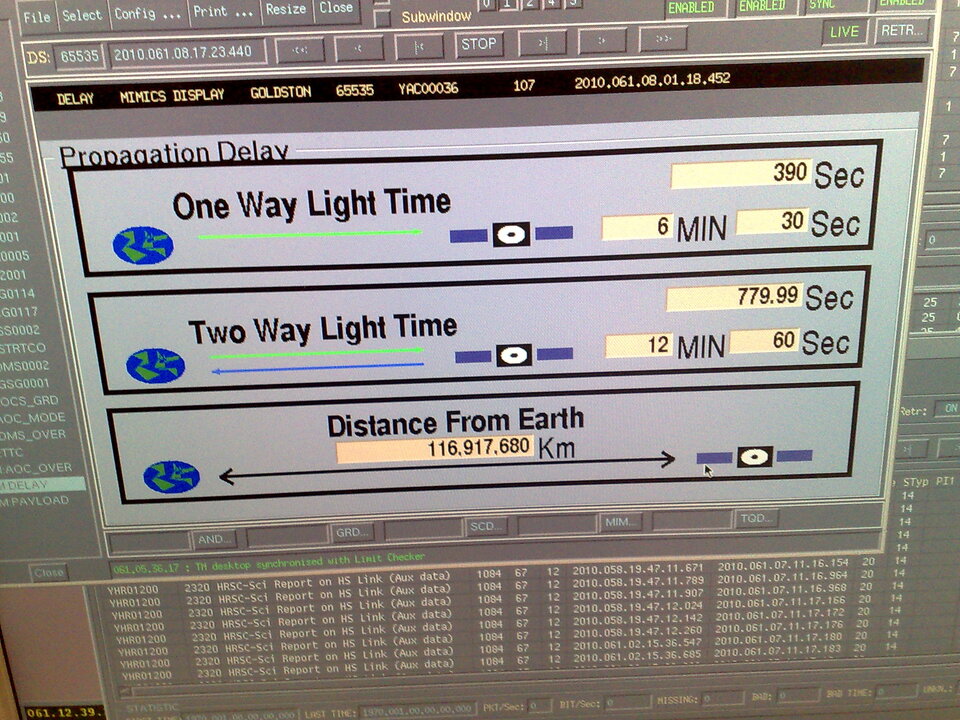
During Friday's one-hour livestream, the time between the images being taken from orbit around Mars and appearing on your screen will be about 18 minutes. That’s 17 minutes for light to travel from Mars to Earth in their current configuration, and about one minute to pass through the wires and servers on the ground.
Note, we’ve never tried anything like this before, so exact travel times for signals on the ground remain a little uncertain.
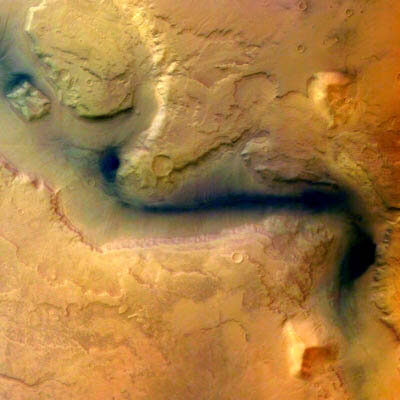
It wasn’t supposed to be like this
Mars Express’s Visual Monitoring Camera, dubbed the Mars Webcam, was not planned for such record breaking. Its primary job, 20 years ago, was to monitor the separation of the Beagle 2 lander from the ‘MEX’ spacecraft. Once it had done that, and reported back, it was turned off.
A bit like the monitoring cameras on board ESA’s Juice spacecraft, which send back visuals of instruments and solar arrays being deployed, it wasn’t meant to be a science instrument and it didn’t need to take precisely accurate images. And yet, here we are.
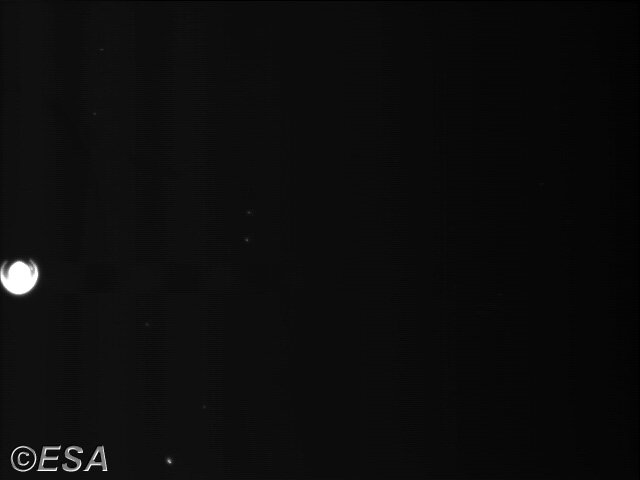
In 2007, the VMC was turned back on and used for science and outreach activities, including campaigns to encourage space enthusiasts and schools to propose observations of Mars. It got its own Flickr page and the Mars Webcam was born (note: the Twitter account has now moved to Mastodon). Only later, scientists realised that these images could be used for ‘proper’ science.
“We developed new, more sophisticated methods of operations and image processing, to get better results from the camera, turning it into Mars Express’s 8th science instrument,” explains Jorge Hernández Bernal, part of the VMC team.
“From these images, we discovered a great deal, including the evolution of a rare elongated cloud formation hovering above one of Mars’ most famous volcanoes – the 20 km-high Arsia Mons.”
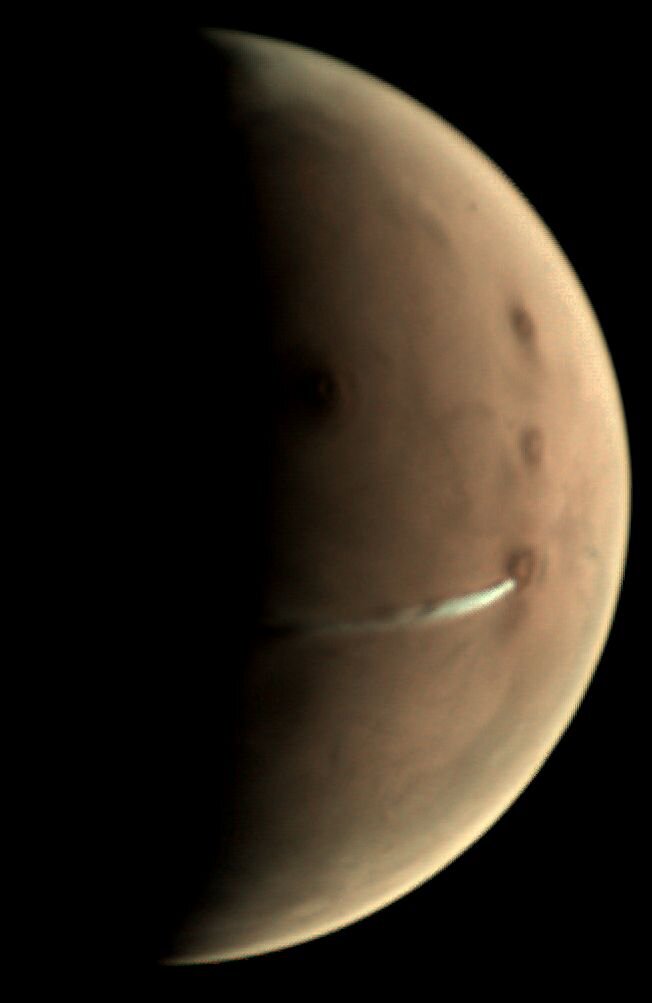
Although it appears as if a plume of smoke is rising out of the volcano, the feature was in fact atmospheric in nature.
The team found that this cloud forms when very fast winds blow against the summit of the volcano, leading to a very strong wave that pushes upwards, cooling the atmosphere by 30ºC, leading to water ice condensation and clouds forming. How this cloud becomes stretched out and elongated, remains a mystery.
In celebration of the long and productive life of Mars Express, teams have spent the last couple of months developing tools that would allow for the higher-quality, science-processed images to be streamed, live, for a full hour.
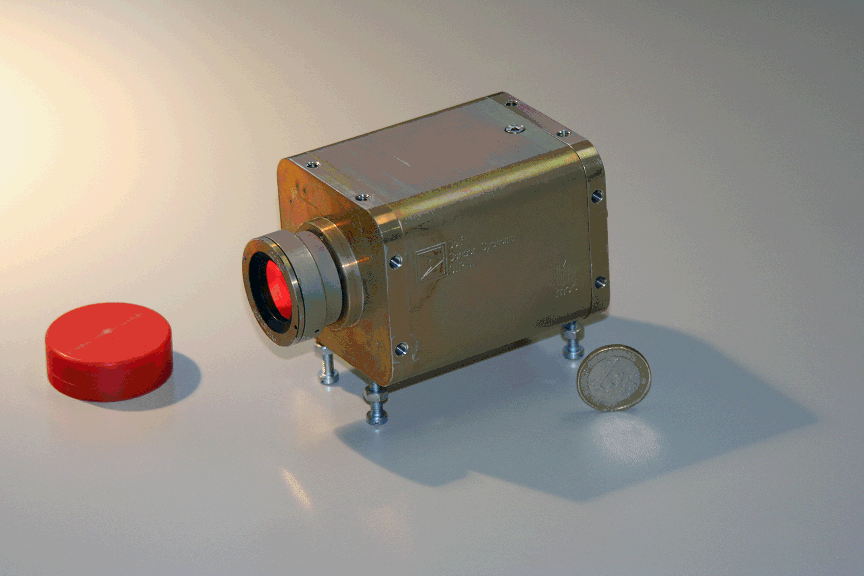
“This is an old camera, originally planned for engineering purposes, at a distance of almost three hundred million kilometres from Earth – this hasn’t been tried before and to be honest, we’re not 100% certain it’ll work,” explains James Godfrey, Spacecraft Operations Manager at ESA’s mission control centre in Darmstadt, Germany.
“But I’m pretty optimistic. Normally, we see images from Mars and know that they were taken days before. I’m excited to see Mars as it is now – as close to a martian ‘now’ as we can possibly get!’
Join us for the #MarsLIVE stream on 2 June on the ESA Youtube channel, from 18:00 CEST (17:00 BST), as we wish a happy 20th birthday to Mars Express.


